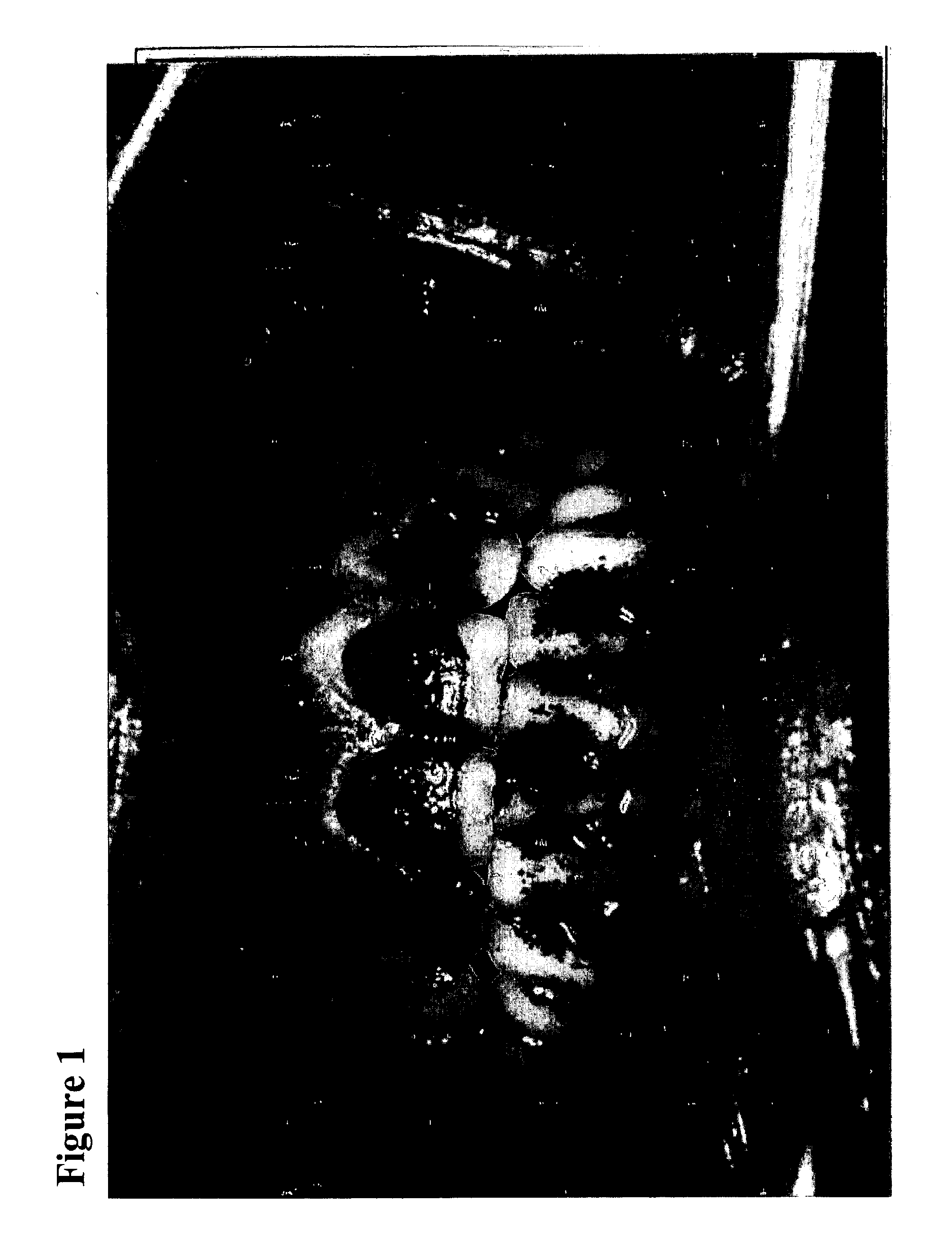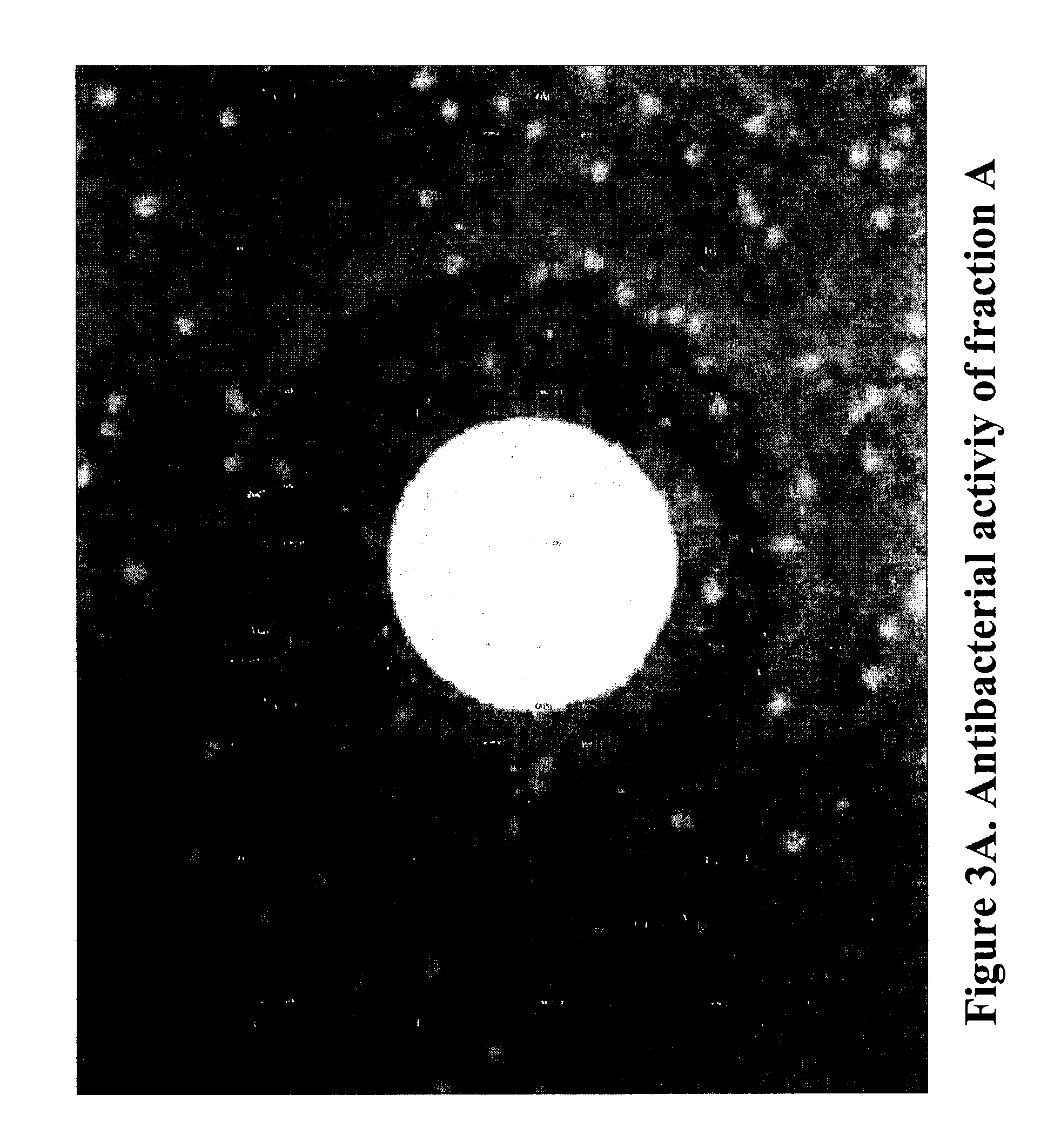Nontoxic dental care herbal formulation for preventing dental plaque and gingivitis
a non-toxic, dental care technology, applied in the field of dental care herbal formulations, can solve the problems of no claim to therapeutic use against dental plaque or gingivitis, and achieve the effect of suppressing growth and preventing dental plaqu
- Summary
- Abstract
- Description
- Claims
- Application Information
AI Technical Summary
Benefits of technology
Problems solved by technology
Method used
Image
Examples
example 1
[0084]Extracting neem bark and leaves using commercial blender at a temperature of 10–25° C., preferably at about 20° C. and in an aqueous polar solvent, exclusion of tannins by liquid phase extraction using a non-polar organic solvent and a polar solvent; concentrating and partitioning the above extract obtained from earlier step by liquid phase extraction using a polar and a non-polar solvent and obtaining polar fraction comprising rich in nimbolides as component A.
[0085]Extracting plant parts of Citrullus colocynthis, preferably underground parts using a homogenizer at 7000 to 8000 revolution per minute in an aqueous polar solvent; purifying active constituents from extract by concentrating and partitioning through liquid phase extraction using a polar and a non-polar solvent to obtain polar phase as component B.
[0086]Further analyzing the active fraction using Semi-Prep and Analytical HPLC. Analyses were performed on a Waters liquid chromatograph equipped with a automated gradie...
example 2
[0090]In another example of the invention, neem leaf and bark were extracted using Super Critical Fluid Extraction technique to isolate active metabolites. This technique is preferred over the earlier reported in Example 1 since the technique involves use of only CO2 as a carrier (extraction) gas and no solvent is used. It renders the final extraction product very eco-friendly. Higher nimbolides (nearly 17% higher) could be extracted using this technique.
example 3
[0091]Laboratory tests were performed to demonstrate antibacterial activity of neem (Fraction A), Citrullus colocynthis (Fraction B), and combination of neem plus Citrullus colocynthis (Formulation with synergistic effect). Antibacterial activities of “Fraction A”; “Fraction B” and “Formulation” were evaluated separately. “Formulation” provided results of the synergistic effect of the two components. The invention reveals laboratory tests conducted on several pathogenic strains of bacteria as per details given below:
[0092]Antibacterial activity of the said extracts against pathogenic bacterial strains e.g. E. coli (strain # 1), Pseudomonas aeruginosa (strain # 2), Streptococcus mutans (strain # 3), Pseudomonas fluorescens (strain # 4), Klebsiella pneumoneae (strain # 5), Proteus mirabilis (strain # 6), Staphylococus aureus (strain # 7) was tested and given below. The activity is measured as inhibition zone (reported as diameter of the zone in mm).
PUM
 Login to View More
Login to View More Abstract
Description
Claims
Application Information
 Login to View More
Login to View More - R&D
- Intellectual Property
- Life Sciences
- Materials
- Tech Scout
- Unparalleled Data Quality
- Higher Quality Content
- 60% Fewer Hallucinations
Browse by: Latest US Patents, China's latest patents, Technical Efficacy Thesaurus, Application Domain, Technology Topic, Popular Technical Reports.
© 2025 PatSnap. All rights reserved.Legal|Privacy policy|Modern Slavery Act Transparency Statement|Sitemap|About US| Contact US: help@patsnap.com



